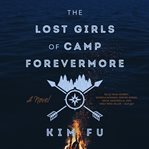Review by New York Times Review
WHAT ARE WE DOING HERE? Essays, by Marilynne Robinson. (Picador, $18.) In a collection of lectures and other writing, the Pulitzer Prizewinning novelist and critic dwells on the current political and cultural climate, and defends the importance of the public university. Above all, Robinson returns to prominent themes across her work: the moral dimension of intellectual development, and the relationship between faith and reason. THE LOST GIRLS OF CAMP FOREVERMORE, by Kim Fu. (Mariner, $14.99.) An overnight kayaking trip becomes tragic one summer at a camp in the Pacific Northwest, and reverberates throughout the lives of the campers for years to come. Our reviewer, Lisa ??, praised the novel, writing that Fu is "a propulsive storyteller, using clear and cutting prose to move seamlessly through time." ASK ME ABOUT MY UTERUS: A Quest to Make Doctors Believe in Women's Pain, by Abby Norman. (Bold Type, $16.99.) Norman is one of millions of women across the world with endometriosis, and uses her experience as a jumping-off point to argue that women's discomfort is routinely dismissed by doctors. Along the way, she interweaves revealing anecdotes - spanning everything from Freud to recent scientific debates. DOWN THE RIVER UNTO THE SEA, by Walter Mosley. (Mulholland/Little, Brown, $15.99.) Joe King Oliver was once one of the N.Y.P.D.'s top investigators, until he was framed for sexual assault and imprisoned. Years later, he's trying to recover from the horrors he faced in jail and running a private detective agency with his teenage daughter, when he hears from the woman who accused him: She found religion and wants to clear her conscience. King then begins the tricky process of looking into who wanted him off the police force - and why. THE NINE OF US: Growing Up Kennedy, by Jean Kennedy Smith. (Harper Perennial, $16.99.) The eighth of nine children, Jean is the last surviving Kennedy sibling, and writes fondly about her experiences with the clan. Some notable episodes are absent from this slim memoir, but her recollections - especially those of a young child witnessing her father's politicking - are a sweet tribute, and give a more personal dimension to a highly public family. THE HOUSE OF BROKEN ANGELS, by Luis Alberto Urrea. (Back Bay/Little, Brown, $16.99.) This bighearted book tells the story of the La Cruzes, an exuberant Mexican-American family in San Diego, who gather as the patriarch is dying of cancer. "The novel disrespects borders," our reviewer, Viet Thanh Nguyen, wrote, calling it "a Mexican-American novel that is also an American novel."
Copyright (c) The New York Times Company [June 9, 2019]
Review by Booklist Review
Camp Forevermore was a beacon of empowerment for young women in the Pacific Northwest. Parents from all over Washington, Oregon, and British Columbia would send their daughters here to transform them from meek mice into fire-building, pine-needle-tea-drinking warriors. One fateful summer, five girls were taken out on a overnight canoe trip with counselor Jan. The sexagenarian camp employee died in her sleeping bag in the middle of the night, leaving the girls stranded on a remote island with no adults, and no way of communicating with the outside world. In addition to recounting the nightmarish debacle, Fu's sharp book is a study of the five girls later in life; in separate sections, she examines Nita, Andee, Dina, Isabel, and Siobhan as they become doctors, mothers, orphans, and widows. The way the women cope with adulthood trauma is informed by their first brush with tragedy: that sick morning when they woke up next to a corpse in their tent. Readers will delight in the complicated, brash, ugly, and sincere presentation of Fu's characters.--Eathorne, Courtney Copyright 2018 Booklist
From Booklist, Copyright (c) American Library Association. Used with permission.
Review by Publisher's Weekly Review
In the latest from Fu (For Today I Am a Boy), which reads like a collection of linked short stories, a summer-camp accident changes the lives of five girls, all between the ages of nine and 11. Nita, Andee, Isabel, Siobhan, and Dina arrive at Camp Forevermore in the Pacific Northwest for different reasons-entranced by brochures featuring girls with "bold smiles of uneven teeth and no-nonsense braids," or eager to escape the strictures of their monotonous upbringings. At first occupied by swimming tests and self-conscious friendships, the campers soon embark on an overnight kayaking trip to a nearby island to become "capable, knowledgeable outdoorswomen." When group leader Jan falls ill, the girls are forced to traverse the island's dense woods seeking rescue, and must contend with the elements and one other. In sections that alternate between the events of the trip and the sweep of each character's adult life, effects of the trauma linger; from Dina's eating disorder and failed modeling career to Nita's sublimated, near-rabid need for her son to Siobhan's mistrust of children. Fu precisely renders the banal humiliations of childhood, the chilling steps humans take to survive, and the way time warps memory. Agent: Jackie Kaiser, Westwood Creative Artists. (Feb.) © Copyright PWxyz, LLC. All rights reserved.
(c) Copyright PWxyz, LLC. All rights reserved
Review by Library Journal Review
For five preteen Camp Forevermore girls, a simple overnight kayaking trip turns horrifying when their group leader dies mysteriously and the girls must find their way back alone. One insists on remaining with the corpse; the others leave and promise to send help. Interspersed with their dramatic quest are the girls' individual stories-each voiced by a separate narrator-before and after their Forevermore experience. -Soneela Nankani is precocious medical student Nita, who becomes a troubled mother of two. Andee's story, read by Tavia Gilbert, is told by her sister Kayla, who chronicles the peripatetic childhood driven by their self-absorbed single mother's whims. Nicol Zanzarella is Isabel, who finds brief happiness in marriage. Emily Woo Zeller chases Dina, who finds only disappointment in Los Angeles. Sophie Amoss is Siobhan, who narrates the camp ordeal and elliptically reveals her adulthood as a psychology researcher. Fu's (For Today I Am a Boy) exploration of the harrowing intersecting moment among young people who barely know each other is a fascinating puzzle of reactions and reverberations. -VERDICT Libraries should encourage the broader audiences Fu's work so deserves by providing her titles in all formats.-Terry Hong, Smithsonian BookDragon, Washington, DC © Copyright 2018. Library Journals LLC, a wholly owned subsidiary of Media Source, Inc. No redistribution permitted.
(c) Copyright Library Journals LLC, a wholly owned subsidiary of Media Source, Inc. No redistribution permitted.
Review by School Library Journal Review
At the exclusive Camp Forevermore, upper-middle-class girls, as well as a few scholarship recipients, are given the opportunity to explore nature and "rough it" in the woods. When Nita, Andee, Siobhan, Isabel, and Dina are unexpectedly left alone on an island when their counselor dies, they must do everything they can to save themselves and maintain their sanity. Spanning decades, this tale examines the lives of the girls before the events at Camp Forevermore and after. Each chapter is written from the point of view of a different character, with Siobhan serving as the narrator for the events at Camp Forevermore. Andee's sister Kayla, who does not attend the camp, narrates Andee's story, providing a unique point of view. The cast of characters are racially, socially, and economically diverse. Themes such as cliques, adolescent insecurities, and the pressure to fit in will resonate with readers. VERDICT Purchase where realistic fiction is in high demand.-Ashley Leffel, Griffin Middle School, Frisco, TX © Copyright 2018. Library Journals LLC, a wholly owned subsidiary of Media Source, Inc. No redistribution permitted.
(c) Copyright Library Journals LLC, a wholly owned subsidiary of Media Source, Inc. No redistribution permitted.
Review by Kirkus Book Review
Five women are forever shaped by a harrowing experience they shared as girls at summer camp.It's 1994 at Forevermore, a sleep-away camp in the Pacific Northwest. The first days are filled with singalongs and preparations for an overnight kayaking trip. Siobhan, a new camper, tries to adapt to the strange social dynamics. One magnetic girl named Dina receives desperate offerings of daisy chains and chocolate milk, while Andee, a tough girl, nearly fails the swim test as everyone gathers to watch her struggle. Someone in the crowd whispers a name for what Andee is: "One of the scholarship girls." Siobhan is stung and confused by the small cruelties of Nita, a veteran camper. Isabel, meanwhile, has remained largely invisible and silent until the third day, when the kayaking trip sets off. Fu (For Today I Am a Boy, 2014, etc.) alternates between short chapters about the kayaking trip and long, expansive sections following each of the girls far into the future. We see the ripple effects of this summer before the specifics of what happened unfold. The trip becomes a predictable, though nightmarish, tale of survival, but Fu's characters are rich, real, and distinct. What happened at Forevermore is not, we see, the worst tragedy of most of their livesbut it is formative. With rawness and objectivity, Fu depicts the women these girls become along with their struggles, both cosmic and mundane. Ultimately, Siobhan is the axis of the novel. Her story is given fewer pages and saved until last, but it resonates deeply and gives sharp focus to what came before.An ambitious and dynamic portrayal of the harm humanseven young girlscan do. Copyright Kirkus Reviews, used with permission.
Copyright (c) Kirkus Reviews, used with permission.


